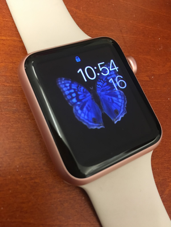Internet of Things
February 27, 2017
Internet of Things Explained
Each day, more and more everyday items are changing and connecting to the internet, creating what is called the Internet of Things.
In a basic sense, anything that connects to the internet makes up the IoT. Instead of having a whole bunch of random devices, the IoT creates a network of communication among them, according to Wireless. For people living in an increasingly busy world, it creates a sense of convenience. Leave your lights on? Use a smartphone to turn them off. Not sleeping well? Have a smartwatch monitor your patterns.
Roughly 6.4 billion “things” were estimated to be connected in 2016 by Gartner. They even project roughly 20.8 billion “things” going online by 2020. In the case of the IoT, “things” are devices like phones, watches, keys, and even door locks.
“…each device collects data for a specific purpose that may be useful to a buyer and impact the wider economy.” explains Wireless. The IoT helps to connect all of the aspects of computing. It takes networking to the next step by allowing more common everyday items to be “smart” according to Forbes.
On a personal level, the IoT could be used to do many things. An example given by Forbes highlights the benefits of connecting smart phones to kitchen appliances to create a smoother morning routine. The IoT could hypothetically be used to create more energy efficient transportation by collecting data about when people use the trains, how far they travel, and how much fuel is really needed.
Forbes projects that in 2017 small cities will lead IoT developments because of this. Though money could be tight, developments in transportation, city delivery, and home security will be made.
However, sources like Pacific Standard have highlighted the downfalls of the IoT. The internet is an insecure resource by nature, and when insecure devices are connected to it, it becomes incredibly easy to be hacked. Hackers write scripts and program bots to scan the Internet for ports, or ways into devices. A solid bot can scan the entire Internet in only a few hours according to NPR.
This does not mean that all IoT devices will 100% get hacked. Most devices connected to a home router will be safe since the router kills any incoming connections that could be malicious. Buying and connecting various devices to a new router with a more secure password will keep people relatively safe from being hacked according to NPR, but the IoT will only continue to grow.

In 2017, there are many trends and predictions of the IoT’s growth. RCR Wireless News predicts new advancements being made in terms of a global network. Until a network is scaled to match the data collection of the IoT, it will never become globally accessible. They also expect companies and businesses to work together to manage and evolve customer expectations at a more rapid rate. Finally, RCR expects millions of sensors, collected as data points, will be set up. This allows for more data to be collected than ever, causing the IoT to grow algorithmically as opposed to linearly.
Though there are both pros and cons to the IoT, it is an inescapable part to today’s society. As technology and social media continues to develop, so will the IoT and the data collected by it.
The Internet of Things is the connection of various items, like the watch pictured above, to the internet. In 2017, it is projected that various locks, thermostats, and other household appliances will be connected to the internet.






